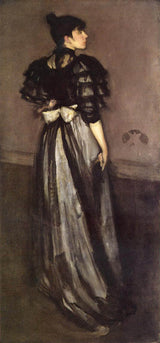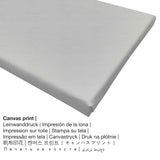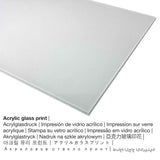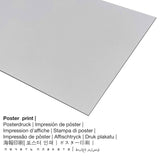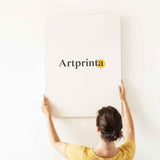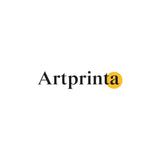James Abbott McNeill Whistler, 1900 - Nne nke Pearl na Silver: Andalusian - ọmarịcha nka.
Ụtụ gụnyere. Mbupu gbakọrọ na ndenye ọpụpụ.
Ngwa ngwaahịa ndị ahịa anyị nwere ike ịhọrọ
In the product dropdown selection you can choose your prefered size and material. Choose your preferred material and size between the following preferences:
- Mbipụta akwụkwọ mmado (akwa akwa akwa): The poster is a printed canvas paper with a slight texture on the surface. It is suited for putting your art print with the help of a custom frame. Please keep in mind, that depending on the absolute size of the canvas poster print we add a white margin 2-6cm around the artwork to facilitate the framing with a custom frame.
- Mbipụta kanvas: The printed canvas material mounted on a wooden frame. It generates the special look of three dimensionality. Hanging your canvas print: The advantage of canvas prints is that they are relatively low in weight. That means, it is easy and straightforward to hang the Canvas print without the support of additional wall-mounts. Canvas prints are suitable for any type of wall.
- Mbipụta iko acrylic (nke nwere ezigbo mkpuchi iko): An print on acrylic glass, which is often described as a plexiglass print, makes your favorite artwork into magnificient décor and makes a great alternative option to canvas or dibond fine art prints. Your artwork is made with the help of modern UV printing machines. The real glass coating protects your chosen art print against sunlight and heat for many years to come.
- Aluminom dibond (ọkpụkpụ ọla): An Aluminium Dibond print is a print with an outstanding depth effect. The Aluminium Dibond Print is the excellent start to art prints produced with alu. Colors are luminous and bright, the fine details appear clear and crisp, and there’s a matte appearance you can literally feel.
Ozi dị mkpa: We try our utmost to describe our art products as accurate as possible and to showcase them visually. At the same time, the colors of the printed materials and the printing might vary marginally from the presentation on the monitor. Depending on your settings of your screen and the condition of the surface, color pigments may not be printed one hundret percent realistically. Because all the art reproductions are processed and printed manually, there may also be minor discrepancies in the motif's exact position and the size.
Original information about the artwork from National Gallery of Art (© Copyright - National Gallery of Art - Nnukwu osisi nke Art)
Ethel Philip, Whistler's sister-in-law and a favorite subject of the artist, whose likeness appears in drawings, etchings, lithographs, and at least five full-size oil paintings, stands against an empty, shallow background with her back to the viewer. She wears a grey silk gown topped with a bolero jacket of transparent silk gauze or fine net—a design inspired by traditional costumes from Spain's Andalusian region. Ethel's head and shoulders are turned slightly to the right to reveal her profile. This graceful pose emphasizes her costume's long, sweeping cascade to the floor, drawing the viewer's attention not to the model's features but to her dramatic attire. One art historian concluded that "it is not a portrait of a person, but of a dress," transforming Ethel Philip into a fashion model or mannequin rather than the subject of a formal, full-length portrait.
The work's title may also have sartorial origins—the result of Whistler's extended stay in Paris, a city renowned for its luxury fashion houses and couturiers. At that time, couture dresses were often given individual names to emphasize their uniqueness. It is possible that Whistler's title refers not to a Spanish woman, but to the model of the dress worn by Ethel.
Whistler had demonstrated a strong interest in women's fashion and its role in his portraiture long before he painted The Andalusian. In the 1870s, apparently dissatisfied with British fashions at the time, the artist himself designed the elaborate dresses worn by the female subjects of Harmony in Grey and Green: Miss Cicely Alexander (Tate Gallery, London) and Symphony in Flesh Color and Pink: Portrait of Mrs. Frances Leyland (Frick Collection).
More information on this painting may be found in the NGA publication American Paintings of the Nineteenth Century, Part II, available as a free PDF. Find under Research > Publications > Systematic Catalogues.
Nṅomi ọmarịcha nka nke gị
Nke a gafee 120 nka nka nke afọ dị afọ Nne nke Pearl na Silver: Andalusian onye na-ese ihe sere ya James Abbott McNeill Whistler n'afọ 1900. E ji nha ya mee ụdị mbụ ahụ: 191,5 cm (75,4 in) x 89,8 cm (35,4 in). Mmanụ na kwaaji was applied by the artist as the medium of the work of art. Today, the artpiece can be viewed in in the digital collection of Nnukwu osisi nke Art, which is the museum of the US-American nation that preserves, collects, exhibits, and fosters an understanding of works of art. The work of art, which belongs to the ngalaba ọha a gụnyere ya na nkwanye ùgwù nke National Gallery of Art, Washington.The creditline of the artpiece is: . Further, the alignment of the digital reproduction is portrait with a ratio of 1: 2, nke pụtara na ogologo bụ 50% mkpụmkpụ karịa obosara.
Ozi nka ahaziri
| Aha nka: | "Mother of Pearl and Silver: The Andalusian" |
| Nhazi nka: | sere |
| Okwu mkpokọta: | nkà nke oge a |
| Narị afọ nka: | 20th narị afọ |
| Emepụtara na: | 1900 |
| Afọ nka: | ihe dị ka afọ 120 |
| Agba na: | mmanụ na kwaaji |
| Akụkụ izizi: | 191,5 cm (75,4 in) x 89,8 cm (35,4 in) |
| Egosiputara na: | Nnukwu osisi nke Art |
| Ebe ngosi nka: | Washington DC, Njikota Obodo Amerika |
| Weebụsaịtị nke ihe ngosi nka: | Nnukwu osisi nke Art |
| Akwụkwọ ikike nka: | ngalaba ọha |
| Site n'aka: | National Gallery of Art, Washington |
Ngwaahịa a
| Nkewa edemede: | ezi nka mmeputakwa |
| Mmeputakwa: | mmeputakwa n'ụdị dijitalụ |
| Usoro mmepụta: | Mbipụta UV ozugbo |
| Ihe ngosi: | emere na Germany |
| Stockdị ngwaahịa: | a na-achọ |
| Ngwaahịa were: | Nhazi ụlọ, mkpokọta nka (mmeputakwa) |
| Ndozi onyonyo a: | nhazi ihe osise |
| Ụdị anya: | ogologo: obosara - 1: 2 |
| Mmetụta akụkụ: | ogologo bụ 50% mkpụmkpụ karịa obosara |
| Ngwa ngwaahịa dị: | mbipụta akwụkwọ mmado (akwụkwọ kwaaji), mbipụta kanvas, mbipụta enyo acrylic (nwere ezigbo mkpuchi iko), mbipụta ọla (aluminium dibbond) |
| Nhọrọ nke akwa akwa n'elu etiti ihe ndọtị (mbipụta akwa akwa): | 20x40cm - 8x16", 30x60cm - 12x24" |
| Mbipụta iko acrylic (nwere ezigbo mkpuchi iko) dị iche iche: | 20x40cm - 8x16", 30x60cm - 12x24" |
| Mbipụta akwụkwọ mmado (akwụkwọ kwaaji): | 30x60cm - 12x24" |
| Mbipụta aluminom (ihe alumini debond ihe): | 20x40cm - 8x16", 30x60cm - 12x24" |
| Nhazi nke nka nka: | biko buru n'uche na ngwaahịa a enweghi etiti |
Nkọwa onye nka
| Ihe nkiri: | James Abbott McNeill Whistler |
| okike nke onye nka: | nwoke |
| Nationality: | American |
| Ọrụ nke onye na-ese ihe: | onye na-ese ihe |
| Country: | United States |
| Nkewa onye nka: | omenkà nke oge a |
© echebe nwebiisinka - Artprinta.com

